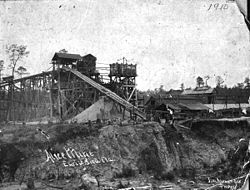Early Bird, Florida | |
|---|---|
 The Alice Mine in Early Bird, 1910 | |
| Coordinates: 29°12′57″N82°22′03″W / 29.21583°N 82.36750°W | |
| Country | United States |
| State | Florida |
| County | Marion |
| Elevation | 75 ft (23 m) |
| Time zone | UTC-5 (Eastern (EST)) |
| • Summer (DST) | UTC-4 (EDT) |
| GNIS feature ID | 295250 [1] |
Early Bird is an unincorporated community in Marion County, Florida, United States. [1]


